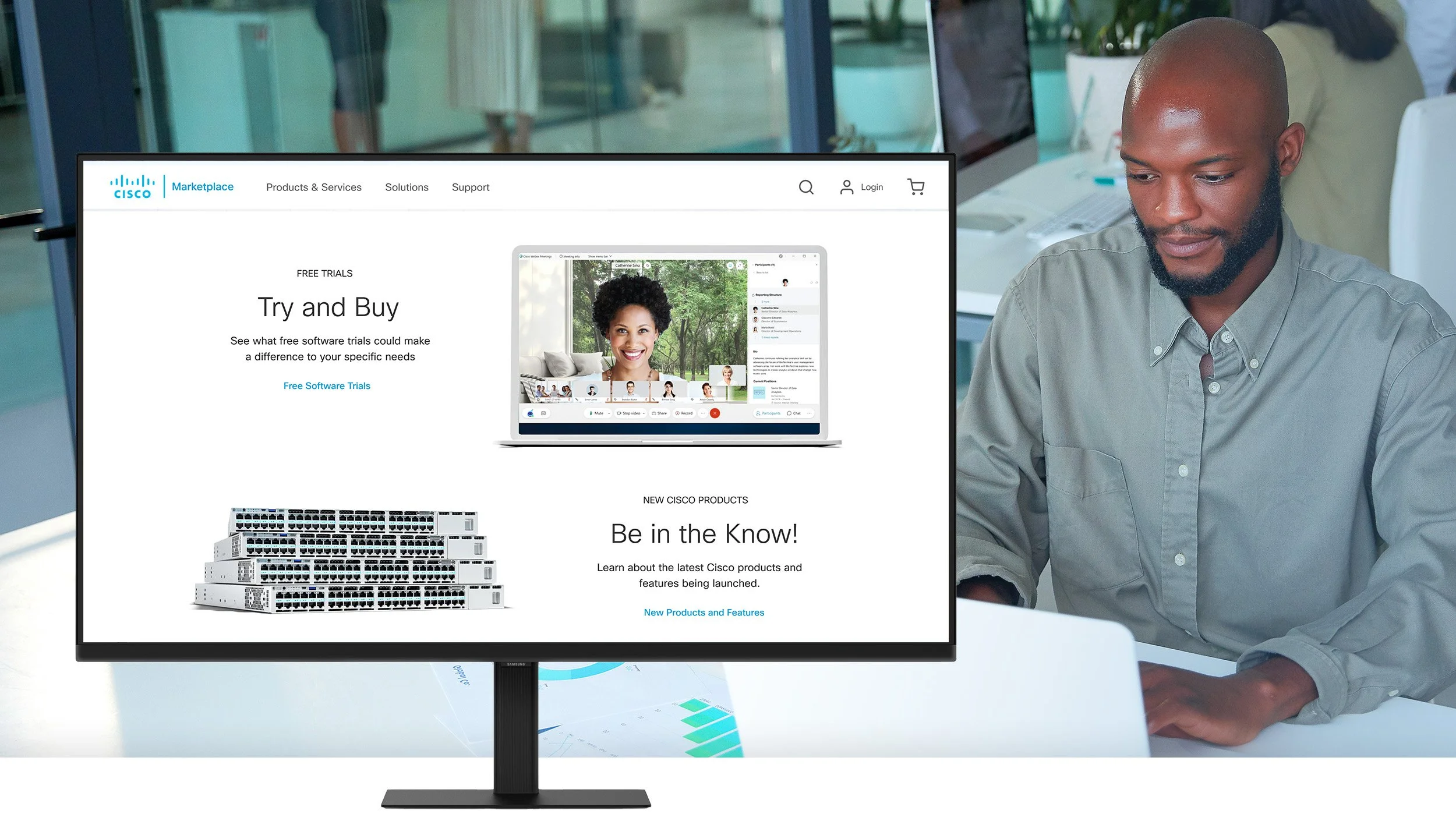
CASE STUDY - CISCO SAAS PLATFORM & SYSTEMS
Transforming SaaS for B2B, Consumers, and Enterprise
To support Cisco’s $50B commerce ecosystem, I led the rethinking and redesign of core ordering and partner tools used to manage quoting, purchasing, and renewal flows. This work required deep experience architecture planning and the ability to unify fragmented, high-volume workflows across internal and partner-facing systems. I collaborated closely with research and multiple product and operations teams to improve the end-to-end conversion and acquisition model for global users.
Role: UX Strategy and Design Lead — design direction, hands-on-design, stakeholder alignment, team mentorship, worked closely with research partner
Collaboration: Cross-functional team leaders from 11 groups · Engineering leads · Design & research team · Executive stakeholders
Problem Space: Cisco’s $50B commerce ecosystem spans tools used by partners, sellers, and fulfillment teams. When I joined the initiative to reimagine the experience, there were no business teams assigned to back and inform the effort, no idefined users, no agreed-upon goals, and no validated direction.
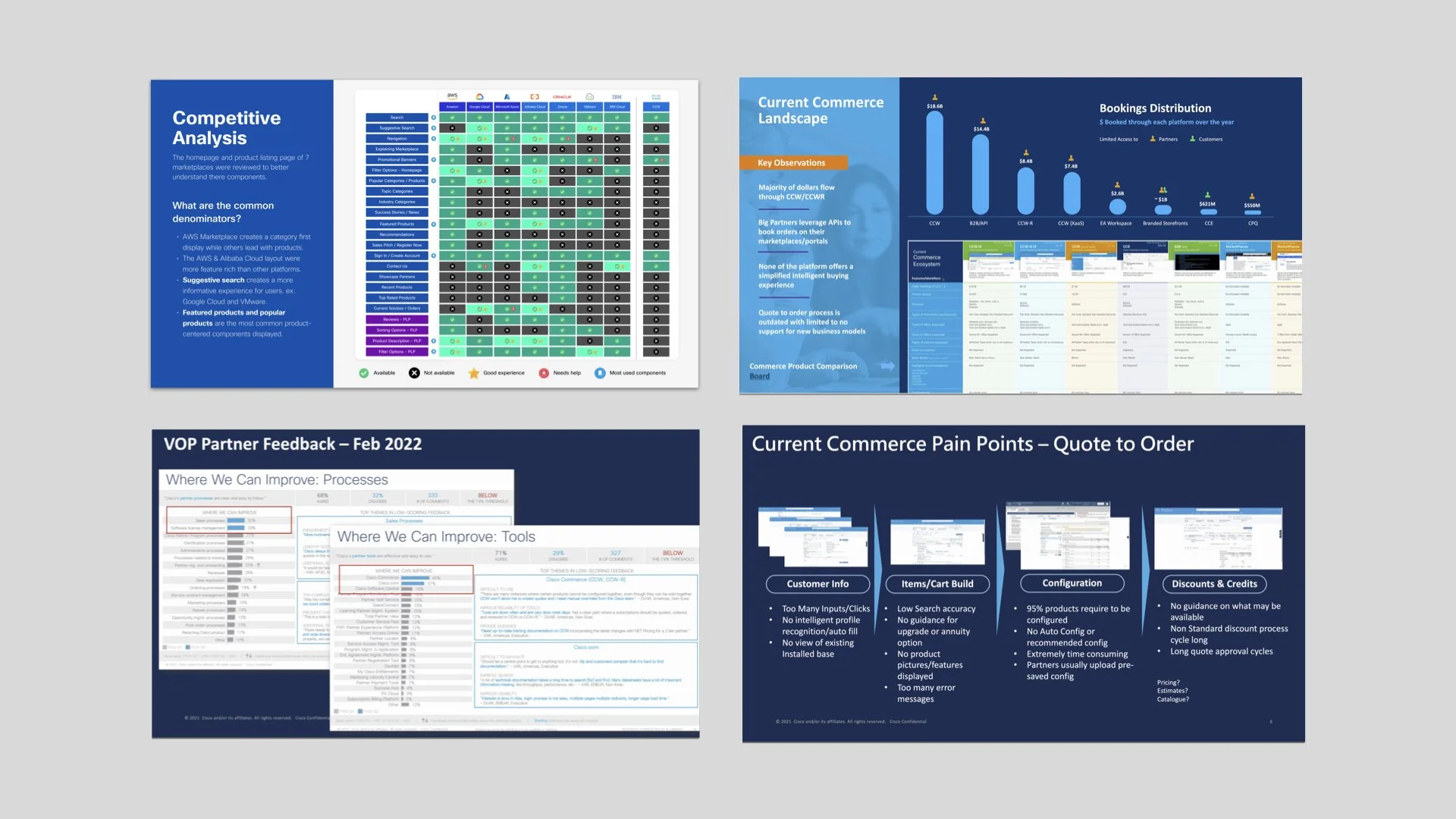
I started by establishing relationships with business partners and stakeholders to identify business needs and goals and the opportunities for the work.
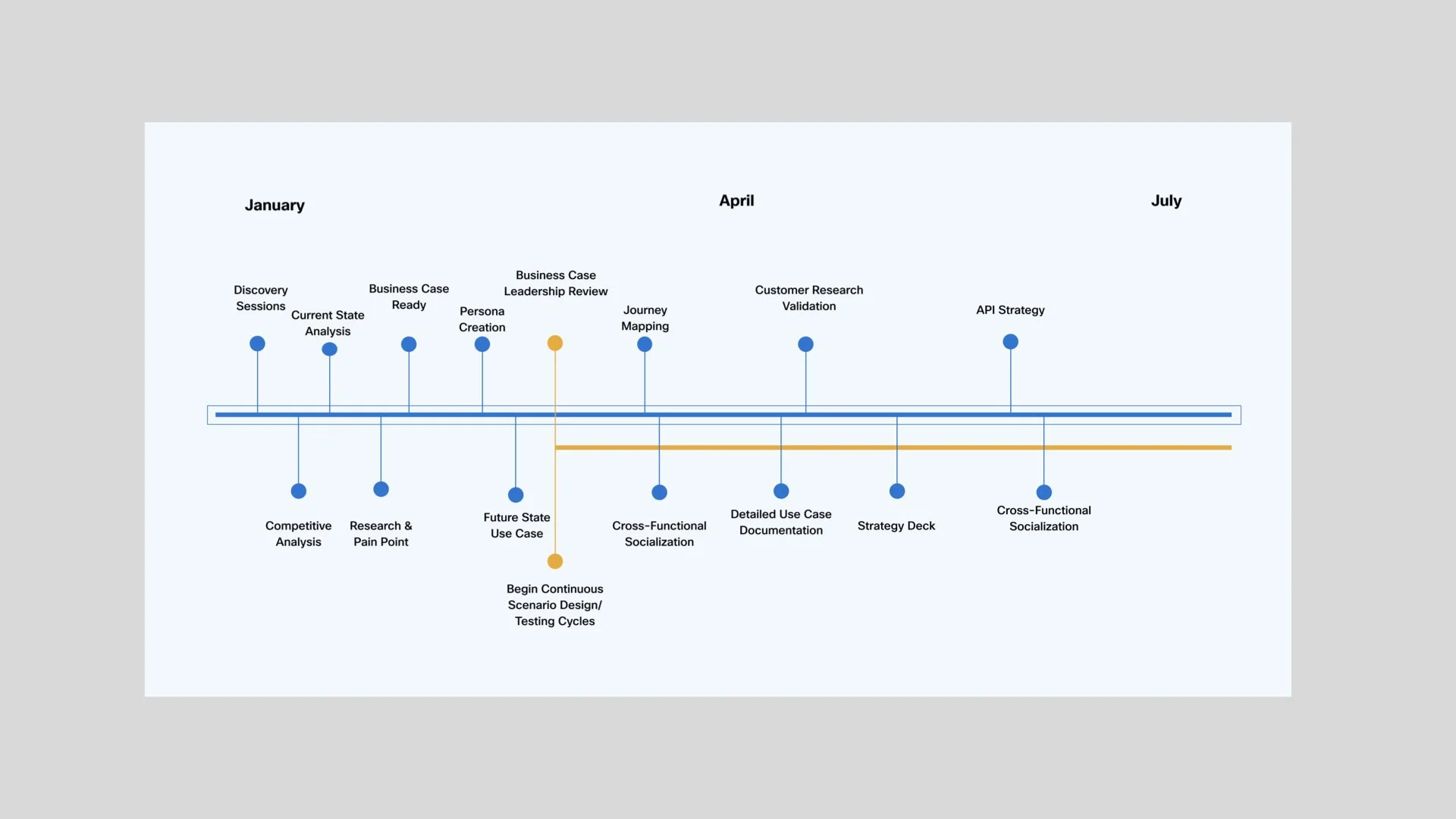
I created a roadmap and planned user research to understand how customers currently interact with Cisco and what could make those interactions more effective and profitable. This discovery work tested key business assumptions and revealed insights that led to design solutions focused on increasing value and profitability for Cisco’s customers.
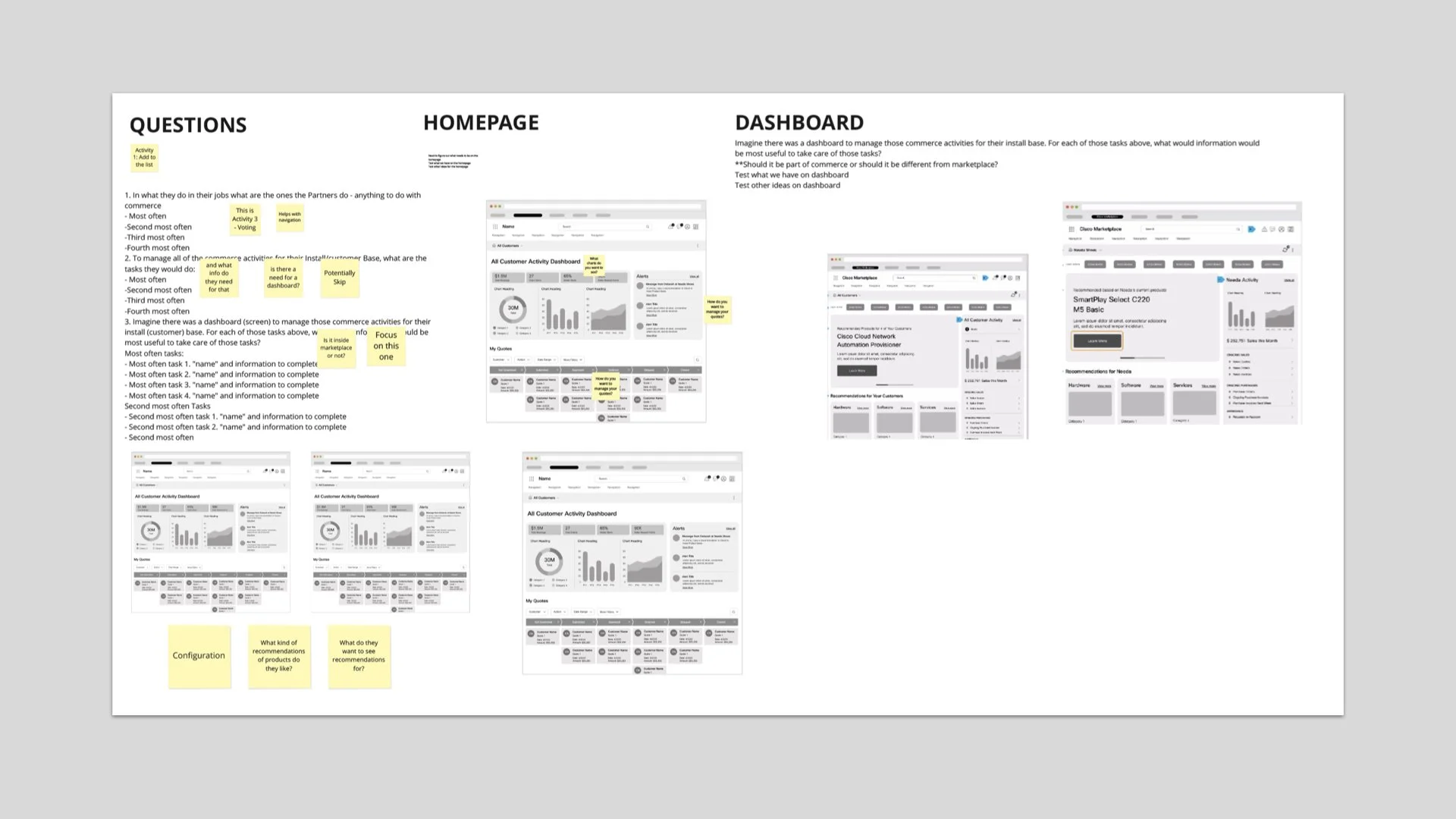
To inform the research, I called out key pieces of information that were important to learn from the testing and user interviews. I provided direction for key information needed with my team researcher and also participated and asked questions in the sessions.
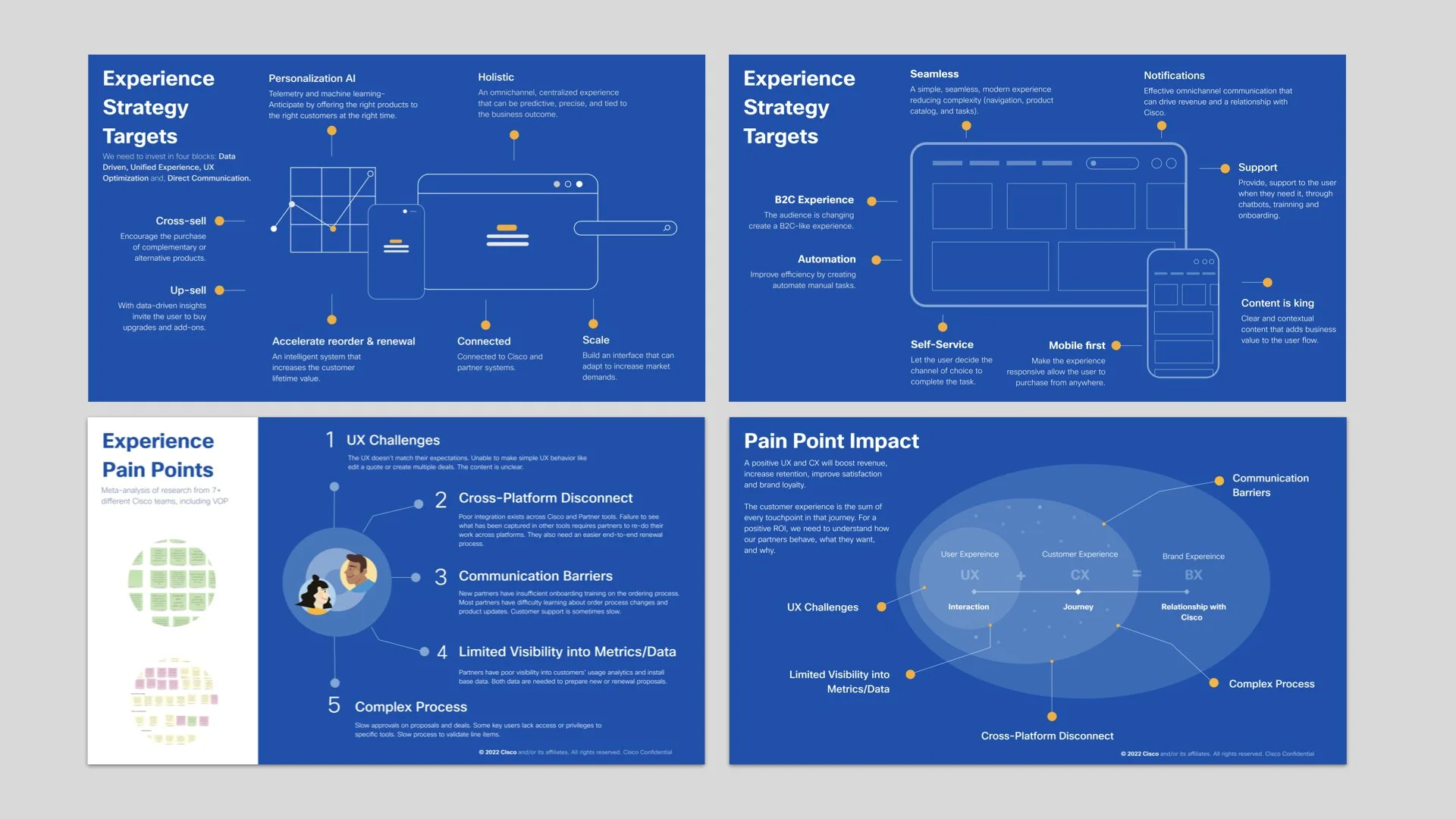
Using key insights from the business and Cisco partners, I identified pain points and experience strategy goals to guide the work. I also shared these findings with stakeholders to build alignment and maintain momentum.
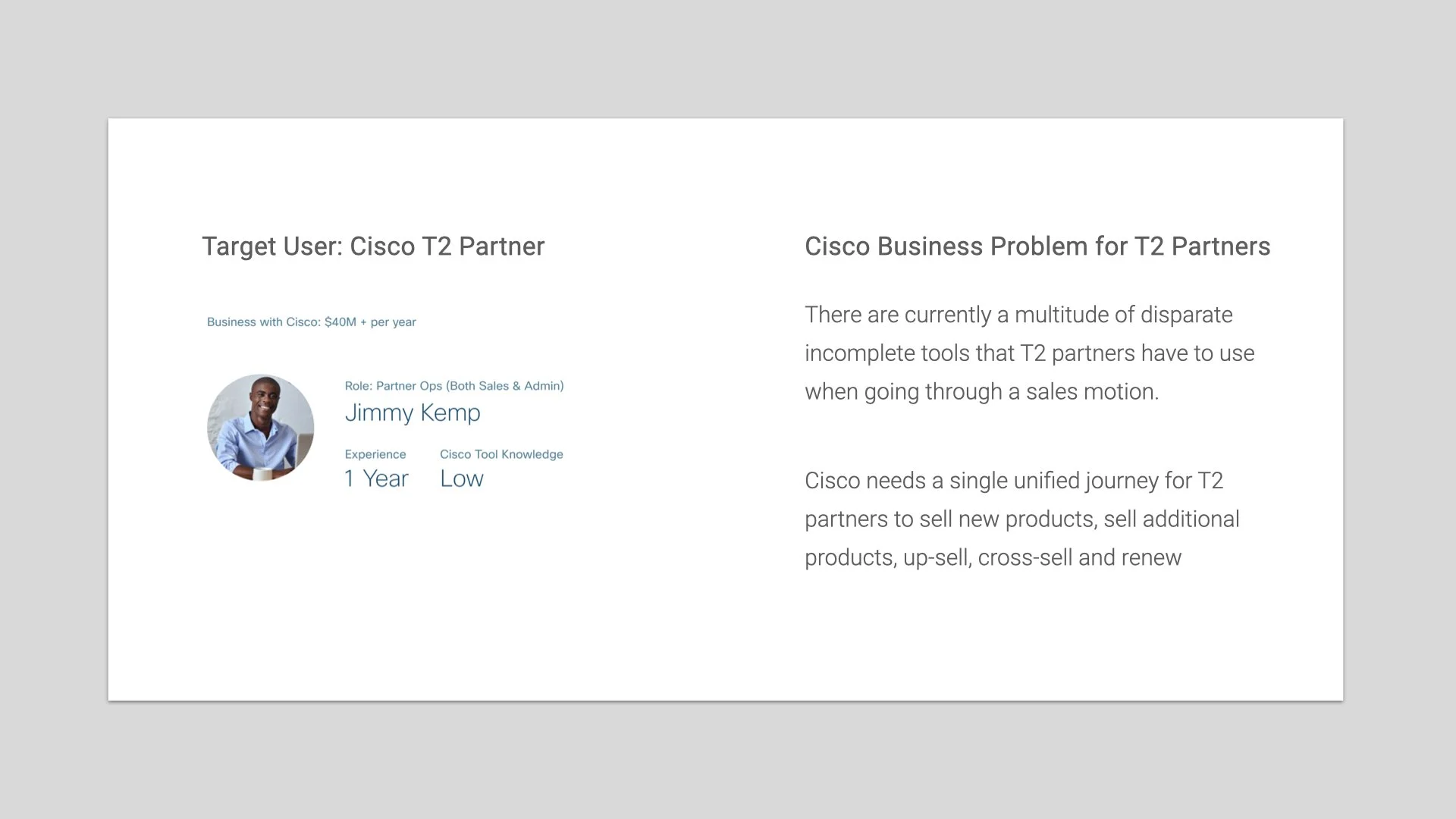
Cisco has many types of commerce users with distinct goals and pain points. To get started, I partnered with the Cisco business team to identify the most strategic user type to focus on—based on multiple factors—to guide initial research, design strategy, and early designs. This helped us move quickly, maintain momentum, and deliver early wins to build on.
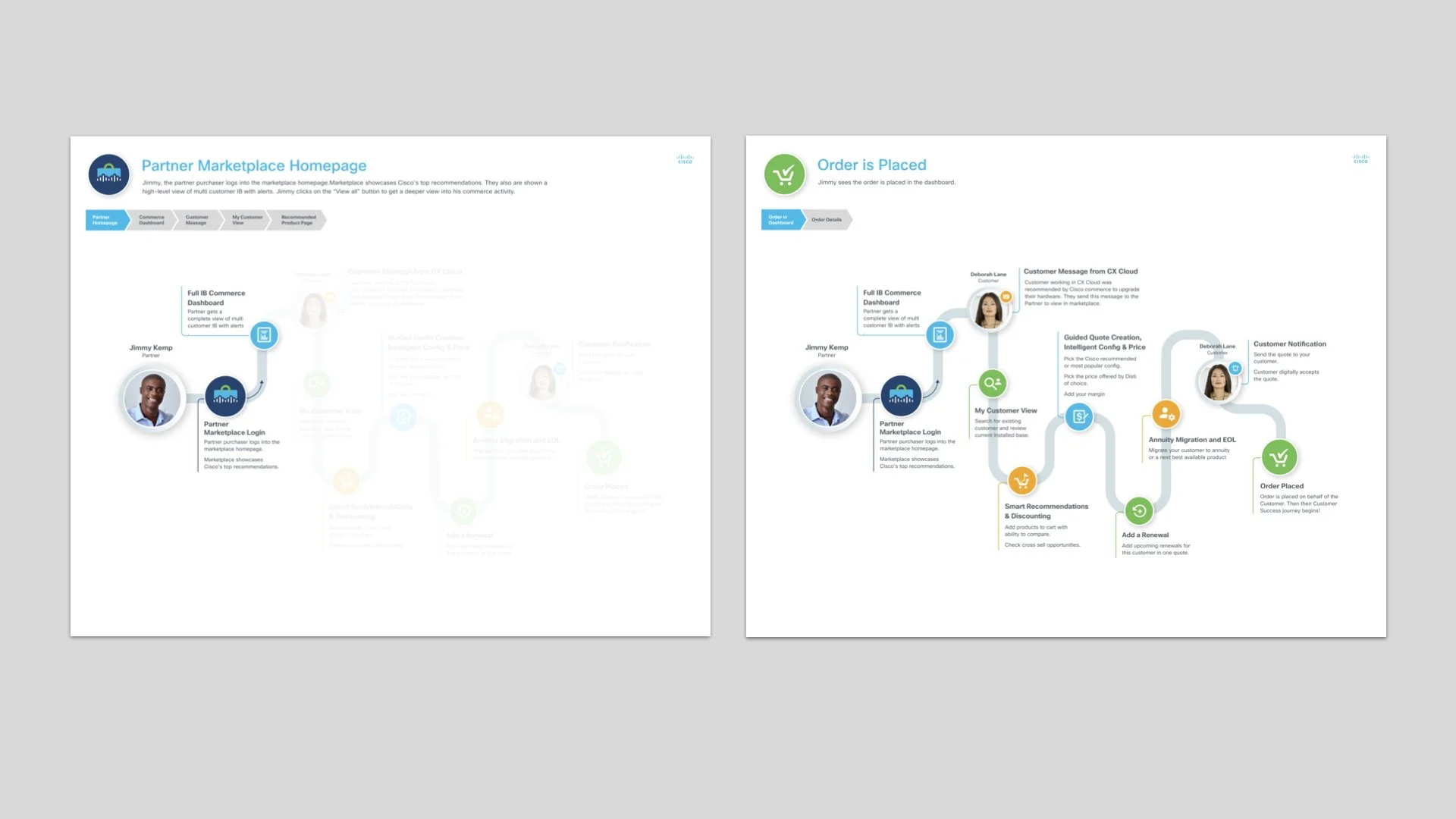
Securing buy-in from Cisco leadership and cross-functional stakeholders was essential. To support this, I defined a simple use case and user journey with a core set of interactions that could scale over time. This approach also made it easier to gather key insights and identify innovation opportunities through iterative review rounds.

The commerce experience was complex—not just in the tasks Cisco partners needed to complete, but also due to the multiple layers of partnerships involved, including partner clients and both internal and external vendors. To ensure both efficiency and scalability, I developed a strategy and design framework that supported multiple workstreams, each addressing different user needs. I also expanded the user journey into detailed sub-steps, clearly outlining the design benefits for both Cisco and its users at each stage of the interaction.

The detailed wireframes were mapped to key milestones in the user journey, with annotations highlighting design improvements and explaining how they enhanced efficiency and profitability for both Cisco partners and the business.
Impact:
Strategy and designs approved by VP leadership for scaled global rollout.
Prototypes and artifacts helped visualize pain points, business impact and usability gains
Provided the roadmap leading from the 0-1 discovery through extended development
Designs credited with aligning user needs to partner profitability
Reflection & Why It Mattered: This initiative successfully transformed a complex commerce ecosystem into a more user-centric and profitable experience. By aligning design with product and engineering around a shared understanding of partner needs, and by leading with a clear strategy and tangible prototypes, I helped lay the groundwork for Cisco's future commerce platform.
Below is an example of one of the higher fidelity designs and prototypes created for this initiative
